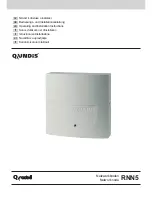
316
Cisco 3900 Series, Cisco 2900 Series, and Cisco 1900 Series Integrated Services Routers Generation 2 Software Configuration Guide
Chapter Administering the Wireless Device
Managing the System Time and Date
Understanding Simple Network Time Protocol
Simple Network Time Protocol (SNTP) is a simplified, client-only version of NTP. SNTP can only
receive the time from NTP servers; it cannot provide time services to other systems. SNTP typically
provides time within 100 milliseconds of the accurate time, but it does not provide the complex filtering
and statistical mechanisms of NTP.
You can configure SNTP to request and accept packets from configured servers or to accept NTP
broadcast packets from any source. When multiple sources are sending NTP packets, the server with the
best stratum is selected. Click this URL for more information on NTP and strata:
http://www.cisco.com/en/US/docs/ios/12_1/configfun/configuration/guide/fcd303.html#wp1001075
If multiple servers are at the same stratum, a configured server is preferred rather than a broadcast server.
If multiple servers pass both tests, the first one to send a time packet is selected. SNTP chooses a new
server only if the client stops receiving packets from the currently selected server, or if (according to the
above criteria) SNTP discovers a better server.
Configuring SNTP
SNTP is disabled by default. To enable SNTP on the access point, use one or both of the commands listed
in
in global configuration mode.
Enter the
sntp server
command once for each NTP server. The NTP servers must be configured to
respond to the SNTP messages from the access point.
If you enter both the
sntp server
command and the
sntp broadcast client
command, the access point
accepts time from a broadcast server but prefers time from a configured server, if the strata are equal. To
display information about SNTP, use the
show sntp
EXEC command.
Configuring Time and Date Manually
If no other source of time is available, you can manually configure the time and date after restarting the
system. The time remains accurate until the next system restart. We recommend that you use manual
configuration only as a last resort. If you have an outside source to which the wireless device can
synchronize, you do not need to manually set the system clock.
This section contains the following configuration information:
•
Setting the System Clock, page 317
•
Displaying the Time and Date Configuration, page 317
•
Configuring the Time Zone, page 318
•
Configuring Summer Time (Daylight Saving Time), page 318
Table 2
SNTP Commands
Command
Purpose
sntp server
{
address
|
hostname
}
[
version
number
]
Configures SNTP to request NTP packets from an
NTP server.
sntp broadcast client
Configures SNTP to accept NTP packets from any
NTP broadcast server.















































